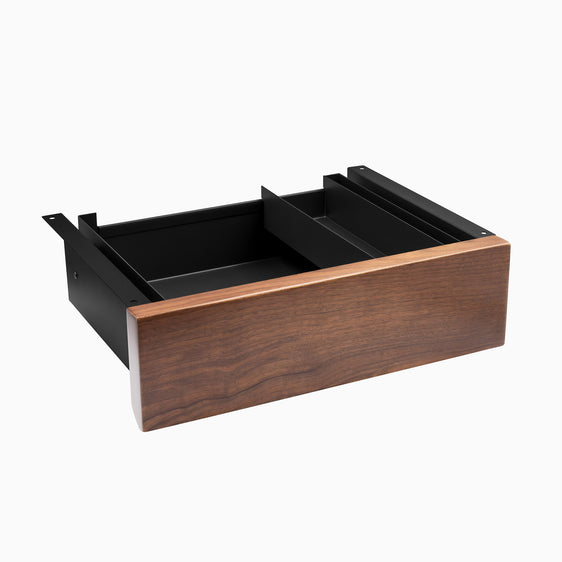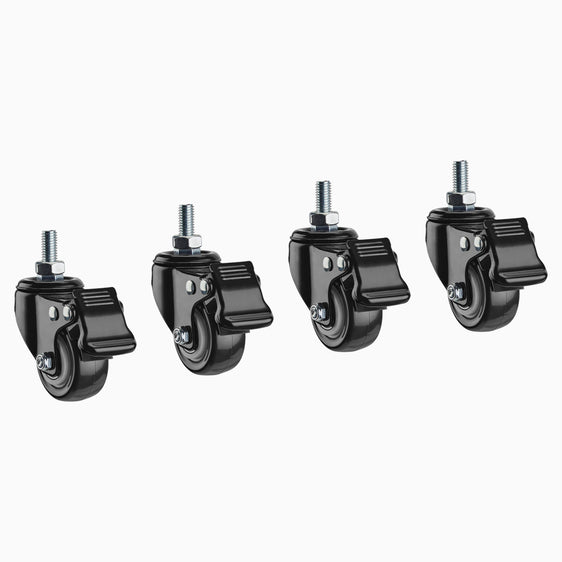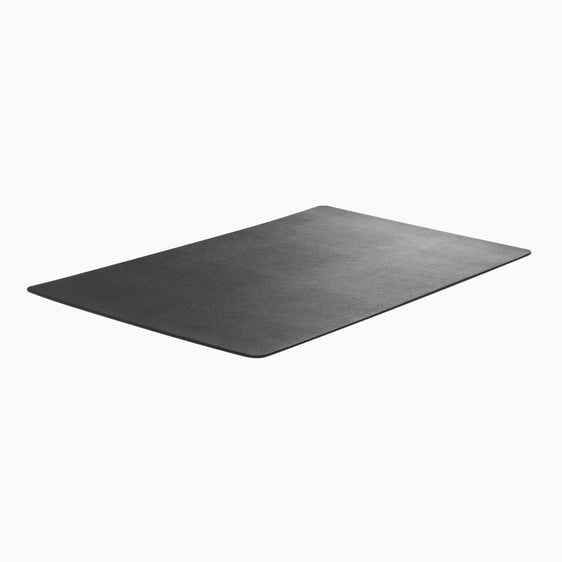
Nouvelles
Les meilleures mesures à prendre pour soulager les douleurs à l'épaule après être assis au bureau
Hayden Adams"Trouvez un travail que vous aimez et vous ne travaillerez jamais un seul jour de votre vie."
Bien que cette affirmation puisse paraître vraie pour la plupart des gens, il va sans dire que lorsque vous choisissez un emploi en entreprise, vous devez supporter de longues heures de travail à un bureau.
Cela rend difficile d'aimer son travail, car être assis à un bureau (et le travail de bureau en général) provoque des douleurs au cou et aux épaules , entre autres syndromes douloureux régionaux, affectant la productivité et l'épanouissement personnel.
Nous comprenons votre combat. C'est pourquoi nous avons ce guide complet pour vous aider à vaincre la douleur physique et les difficultés de travail provoquées par les douleurs à l'épaule liées au travail .
Commençons!
Douleur à l'épaule après être assis à un bureau : causes courantes

Une position assise prolongée à un bureau présente des risques pour la santé et des blessures , notamment des douleurs à l'épaule. Cette douleur touche environ 18 à 26 % des adultes, ce qui en fait un syndrome douloureux régional courant.
La douleur à l’épaule est facile à repérer une fois que les symptômes les plus courants (et d’autres symptômes moins visibles) apparaissent.
Une fois que vos épaules se sentent inconfortables en raison de la sensation de picotement et de choc, qui passe parfois des épaules aux douleurs dans le bas du dos, vous réaliserez à quoi vous faites face.
Mais quelles sont les causes courantes des douleurs à l’épaule ?
Dans cette section, nous aborderons les causes les plus courantes de douleur à l'épaule et comment y remédier. Continuer à lire!
Mauvaise position
L’une des causes des douleurs et des problèmes d’épaule est une mauvaise posture lorsque vous êtes assis à un bureau. Une mauvaise posture est un problème physique typique dont souffrent les employés de bureau s'ils ne disposent pas d'ergonomie au bureau .
Cela peut être dû au fait que notre mémoire musculaire adopte automatiquement une mauvaise posture de travail, avec les mauvaises caractéristiques de posture suivantes :
- Affaissé
- Courbé
- Glisser en étant assis à un bureau
De plus, il est possible de s'attaquer au problème du cou et de la posture lorsque l'on est assis à un bureau lorsque nous intégrons l'ergonomie du bureau, par exemple en garantissant une hauteur appropriée du bureau et de la chaise en position assise.
Assis prolongé et inactivité
Une autre cause de douleur à l’épaule est la position assise prolongée et l’inactivité – essentiellement, un mode de vie sédentaire .
Une position assise prolongée à un bureau provoque des douleurs à l'épaule chez les travailleurs, car les muscles des épaules sont constamment tendus. La douleur à l’épaule que vous ressentez peut même se transformer en instabilité des articulations et en une faible mobilité de l’épaule à long terme.
Postes de travail inconfortables et non ergonomiques
Comme mentionné précédemment, votre environnement de travail doit être très ergonomique, car il peut aider les employés de bureau à s'asseoir confortablement avec une meilleure posture, ce qui se traduit par une meilleure efficacité et productivité du travail de bureau .
Nous avons identifié que les postes de travail inconfortables et non ergonomiques se traduisent par les situations suivantes :
- La chaise de bureau est disproportionnée par rapport à la taille, au poids et aux besoins de travail des employés.
- Les éléments essentiels du travail sur votre bureau ne sont pas accessibles.
- Vous devez incliner votre dos ou avancer votre cou plusieurs fois pour bien voir l'écran de l'ordinateur ou le moniteur de l'ordinateur.
Lésions motrices répétitives (RSI)
Une mauvaise posture assise et une inactivité prolongée lorsque vous êtes assis à un bureau peuvent parfois entraîner des microtraumatismes répétés ou des troubles traumatiques cumulatifs.
Le RSI est une blessure causée par des mouvements répétitifs de parties du corps. Certains des symptômes courants que vous pouvez observer lorsque vous souffrez de RSI comprennent :
- douleur au poignet (syndrome du canal carpien), douleur au cou, douleur à l'épaule
- raideur, engourdissement, gonflement
- crampes musculaires
Douleur de la coiffe des rotateurs
Le groupe de muscles et de tendons de la région de votre épaule qui, lorsqu'ils sont en bonne santé, sont bénéfiques pour soulever et lancer des mouvements d'épaule, s'appelle la coiffe des rotateurs.
Si les muscles de la coiffe des rotateurs sont tendus en raison d'activités répétitives et d'une mauvaise posture pendant de longues périodes, une douleur aiguë ou une douleur de la coiffe des rotateurs est inévitable.
Cette douleur à l’épaule rend difficile un sommeil de qualité et limite même votre mobilité au travail.
FAIT : Une douleur ou une sensation de picotement dans l’omoplate ou l’omoplate peut également être attribuée à une paresthésie. Cela peut indiquer des lésions nerveuses ou une pression.
Conseils de posture et d’ergonomie pour prévenir les douleurs à l’épaule

La douleur à l’épaule est une partie inconfortable de la vie au bureau et elle s’étend même jusqu’au bas du dos.
Heureusement, soulager les douleurs à l'épaule et savoir comment prévenir les douleurs dans le bas du dos en position assise devrait être facile lorsque vous utilisez la bonne posture assise, les exercices et les conseils de changement de mode de vie sain de cette section.
Bonne posture assise
Un moyen éprouvé d’éviter les douleurs à l’épaule est d’avoir une bonne posture. Une bonne posture aide à soulager les douleurs aux épaules et à relâcher les tensions et les pressions excessives sur votre corps.
Sur le lieu de travail, pour y parvenir, il faut plusieurs ajustements dans votre position habituelle, la disposition du bureau et l'équipement ergonomique.
Pour vous aider à comprendre ce que nous voulons dire et vous aider à adopter une bonne posture, vous pouvez consulter les directives relatives à une bonne posture assise et suivre les estimations générales répertoriées ci-dessous.
Ajustements du bureau et des chaises
La hauteur idéale de votre bureau doit être proche de l’avant-bras ou de l’avant-bras lorsqu’il est plié à un angle de 90 degrés.
De plus, la hauteur de la chaise doit mettre vos pieds à plat sur le sol. Si cela est impossible en raison des restrictions du fauteuil, assurez-vous d'avoir un repose-pieds pour garder vos pieds confortables et à niveau.
Emplacement du moniteur
Il serait préférable de se méfier du placement de votre moniteur pour soulager les douleurs dans le haut et le bas du dos et éviter les douleurs aux épaules et au cou causées par une position assise incorrecte au bureau.
Voici les choses que vous devez observer :
- Placez le moniteur devant vous.
- Asseyez-vous à une longueur de bras du moniteur.
- Montez le moniteur un peu au-dessus du niveau de vos yeux.
Ergonomie du clavier et de la souris
Les réglages du clavier et de la souris sont essentiels pour obtenir la bonne posture pour un travail efficace (et pour éviter les douleurs au cou, aux épaules et aux poignets) .
Pour obtenir une position ergonomique optimale, vous devez placer le clavier et la souris de l'ordinateur devant vous à une hauteur de bureau au moins au niveau des coudes.
{{ spec_keyboard_tray }}Autres accessoires et outils ergonomiques
Outre les ajustements et les emplacements ci-dessus, voici quelques accessoires et outils ergonomiques que vous pouvez intégrer à votre vie de bureau pour vous aider à vous asseoir correctement à un bureau tout en évitant les douleurs au cou et, souvent, aux épaules :
- Bureau debout
- Support de moniteur
- Accoudoir
- Oreiller de soutien lombaire
- Coussin de siege
Exercices d'étirement et de renforcement
Outre la correction de la posture à l’aide de positions et d’outils ergonomiques, certains exercices d’étirement et de renforcement devraient également être inclus dans votre liste de priorités.
Ceux-ci maintiennent votre corps en mouvement malgré de longues heures passées assis à un bureau et aident à prévenir la prise de poids .
Ces exercices augmentent également considérablement la force des muscles squelettiques et aident même à guérir d’autres muscles blessés.
Voici quelques étirements et exercices de renforcement faciles que vous pouvez intégrer à vos activités professionnelles quotidiennes sans transpirer :
Étirements du cou et des épaules
Soulager ou prévenir les douleurs au cou et aux épaules au bureau peut être effectué grâce à des étirements du cou et des épaules. Pour cet exercice, vous pouvez effectuer les étapes suivantes :
- Asseyez-vous droit pendant que vos jambes sont croisées sur la chaise.
- Amenez lentement votre menton vers votre poitrine .
- Tenez pendant dix secondes et revenez à la première position. Répétez trois fois.
- Inclinez lentement la tête vers la gauche . Tenez pendant dix secondes, revenez à la première position et faites-le du côté droit. Répétez trois fois
- Levez votre bras au niveau des épaules , abaissez votre menton dans la direction opposée et sentez votre omoplate s'étirer. Tenez pendant dix secondes et faites-le trois fois sur les deux bras.
CONSEIL : Effectuez des mouvements circulaires du poignet pour soulager la douleur au poignet et augmenter le flux sanguin dans vos bras.
Renforcement de la coiffe des rotateurs
Le renforcement de la coiffe des rotateurs est indispensable pour améliorer la flexibilité de vos omoplates et alléger le fardeau des douleurs chroniques à l’épaule. Pour ce faire, voici quelques exercices simples que vous pouvez suivre :
- Penchez votre corps vers l’avant tout en plaçant la main libre sur le bureau et l’autre accrochée sur le côté.
- Délibérément le bras suspendu vers l'avant et vers l'arrière, étirant l'omoplate. Faites-le dix fois sur chaque bras.
- Faites des mouvements circulaires et répétez dix fois pour chaque bras.
Étirements et exercices du haut du dos
Le haut de notre dos a toujours été victime d’affaissement et de courbure, créant une mauvaise posture qui finit par produire des douleurs au cou et aux épaules.
Pour soulager la douleur que vous ressentez dans les muscles du haut du dos, voici quelques exercices que vous pouvez essayer :
- Lorsque vous êtes assis sur une chaise de bureau, asseyez-vous droit, le dos contre la chaise, les pieds à plat sur le sol.
- Étendez votre bras gauche au-dessus de votre tête et atteignez le côté droit, en pliant le haut de votre corps.
- Revenez à la position initiale et répétez l'exercice cinq fois
- Ensuite, reproduisez le mouvement avec votre bras droit
En dehors de cela, vous pouvez également verrouiller les roues de votre chaise, la positionner sur le côté et vous asseoir droit.
Ensuite, tenez la chaise à deux mains et faites pivoter votre corps vers la gauche. Vous pouvez le faire de l’autre côté du corps en changeant la position de la chaise.
Renforcement du milieu du dos
Les muscles du milieu du dos sont aussi importants que les autres parties du corps pour prévenir les douleurs au cou et aux épaules.
Le renforcement du milieu du dos est possible en effectuant ces étapes :
- Tenez-vous debout ou asseyez-vous droit
- Levez vos deux bras en position Y au-dessus de votre tête
- Abaissez lentement les deux bras jusqu'à ce que vos omoplates soient étirées
- Tenez pendant cinq secondes et revenez à la position initiale
- Faites cela au moins cinq fois
Renforcement et stabilité du noyau
L'exercice de renforcement et de stabilité de base que nous recommandons est une activité que vous pouvez faire avant ou après le travail . Voici un processus étape par étape :
- Choisissez un espace propre et confortable sur lequel vous pourrez vous allonger
- Une fois prêt, allongez-vous sur le dos et pliez les genoux à 90 degrés
- Mettez vos mains sur votre épaule de manière entrecroisée
- Soulevez la tête et les épaules du sol tout en gardant les genoux pliés
- Tenez pendant trois secondes tout en resserrant votre tronc ( pas au détriment de votre colonne vertébrale/posture vertébrale )
- Retour à la position initiale
- Répétez le processus au moins cinq fois
Changements de mode de vie pour réduire la douleur à l'épaule

Modifier son mode de vie fait partie des efforts visant à adopter une bonne posture et à prévenir d’autres douleurs au cou et aux épaules.
Cependant, il n'est pas nécessaire de se précipiter , car il est impossible de le maintenir sur le long terme si vous n'êtes pas cohérent. Ce que nous avons observé à partir de la recherche et de l’expérience, c’est qu’il faut modifier progressivement son mode de vie.
Voici les changements que vous pouvez progressivement intégrer à votre routine quotidienne :
Prendre des pauses régulières
Ne mettez pas votre corps sous trop de pression en restant dans une seule position pendant votre quart de travail. Vous pourriez ressentir de la douleur et de la fatigue si vous restez assis pendant de longues périodes.
Faites des pauses régulières et promenez-vous dans le bureau, prenez l'air, discutez avec vos pairs et pratiquez d'autres activités pour alléger la pression liée au fait de rester assis à un bureau pendant de longues périodes.
Rester physiquement actif
Rester physiquement actif est le moyen de conserver votre mobilité et votre flexibilité à leur meilleur, surtout lorsque vous êtes toujours assis à un bureau.
Vous pouvez vous mettre au défi de faire 10 000 pas par jour, de faire du jogging pendant 15 à 30 minutes le matin avant le travail ou de faire du Pilates après les heures de travail.
Si vous avez des limitations physiques ou d'autres problèmes, vous pouvez recourir à la physiothérapie (ou à la thérapie manuelle) en consultant des physiothérapeutes fiables.
Intégrer le yoga et la méditation
À l’instar d’un massage (qui offre un relâchement des tissus mous), le yoga et la méditation améliorent votre bien-être physique et mental.
Le yoga comprend de nombreux exercices qui aident à soulager les douleurs aux épaules. Cela profite également à votre posture. D’un autre côté, la méditation maintient votre esprit à l’aise et vous évite la pression du travail.
Un bon sommeil et une bonne nutrition
Les changements de mode de vie mentionnés ci-dessus ne seront bénéfiques que s’ils sont associés à un sommeil et une alimentation adéquats . Voici quelques-uns de nos meilleurs conseils :
- Vous devriez dormir au moins six à sept heures chaque jour
- Couchez-vous à la même heure chaque nuit
- Rendez votre chambre aussi confortable que possible
- Mangez équilibré sans sauter de repas
- Évitez de boire de la caféine si cela n'est pas nécessaire
- Essayez des légumes ou des fruits crus tranchés comme collations au travail
- Limitez votre consommation de sucre
Ces conseils aideront votre cerveau à mieux se concentrer, à favoriser une structure osseuse saine, à réguler le flux sanguin, à prévenir la fatigue et même à combattre les maladies et à réparer les tissus corporels endommagés.
Vous pouvez consulter un médecin du sommeil et un diététiste si vous rencontrez des problèmes de sommeil et de nutrition.
Techniques de gestion du stress
La gestion du stress est une façon d’éloigner la pression de vos épaules, de votre esprit et de toutes les autres parties du corps stressées . Cela vous rend également plus efficace au travail.
Nous avons ici quelques techniques de gestion du stress que vous pouvez suivre pour vous aider à atteindre une meilleure santé :
- Variez vos positions physiques de travail au bureau et veillez à ce qu'elles soient ergonomiques
- Répartissez votre charge de travail tout au long de la journée
- Évitez de consommer des drogues et de l’alcool
- Exercice régulier
- Mangez des repas bien équilibrés
- Discutez avec vos collègues
Questions fréquemment posées
Nous savons que vous avez quelques questions en tête. Nous avons donc répondu à certaines de vos questions liées aux douleurs à l’épaule dans cette section.
Qu’est-ce que l’épaule de souris et comment puis-je la prévenir ?
L'épaule de la souris est le résultat de l'utilisation d'ordinateurs sans accoudoir ergonomique qui supporte la longueur du bras. Il s’agit également d’une condition significativement associée au RSI.
Comme les RSI, ils peuvent être évités en utilisant un accoudoir approprié, en consultant un physiothérapeute, en faisant de l'exercice, en respectant la hauteur appropriée du bureau et de la chaise et en modifiant votre mode de vie .
Combien de temps dois-je faire des pauses pour éviter les douleurs à l'épaule lorsque je suis assis à un bureau ?
Vous pouvez vous reposer régulièrement en vous levant ou en faisant des exercices basés sur la position assise, les épaules et les bras pendant quelques secondes toutes les 15 minutes de position assise stationnaire .
Comment puis-je reconnaître les signes d’une blessure à la coiffe des rotateurs ?
Comme nous l’avons mentionné plus tôt, voici les signes et symptômes à connaître si vous souffrez d’une blessure à la coiffe des rotateurs :
- Douleur aiguë
- Douleur qui désactive un sommeil de qualité
- Mobilité limitée des épaules
Quelle est la configuration ergonomique idéale du poste de travail ?
La configuration ergonomique idéale du poste de travail pour prévenir les symptômes de douleurs corporelles présente les caractéristiques suivantes :
- Le bureau a une hauteur similaire à celle de l'avant-bras à 90 degrés.
- La hauteur de la chaise est suffisante pour garder les pieds à plat ; sinon, il doit y avoir un repose-pieds confortable pour compenser
- L'écran de l'ordinateur doit être placé devant, à une longueur de bras du corps, à une hauteur juste au-dessus du niveau des yeux.
- Le clavier et la souris doivent être placés suffisamment près du corps pour limiter les courbures ou les inclinaisons excessives vers l'avant.
Existe-t-il des appareils ou des outils d'assistance que je peux utiliser pour soulager les douleurs à l'épaule lorsque je travaille au bureau ?
Oui, il existe des appareils fonctionnels que vous pouvez utiliser pour soulager la douleur aux épaules et soulager les tensions de la colonne vertébrale et des bras lorsque vous travaillez à un bureau. Ceux-ci inclus:
- Bureau debout
- Accoudoir
- Oreiller de soutien lombaire
- Coussin de siege
Conclusion
Comme nous le savons tous, les douleurs à l’épaule dues à cette situation affectent votre bien-être physique et mental. À son tour, cela affecte l’efficacité du travail et la productivité.
S'il est indispensable de bien faire son travail, vous ne devriez pas avoir à sacrifier votre santé. Avoir un poste de travail ergonomique permet de prévenir les douleurs à l’épaule liées au travail.
C’est pourquoi il est essentiel d’avoir un environnement de travail ergonomique et d’adopter une bonne posture, notamment lorsque l’on est assis à un bureau.
Alors qu'est-ce que tu attends? Soulageons les douleurs à l'épaule en réalisant de meilleurs ajustements de posture et de style de vie pour une meilleure qualité de vie !








